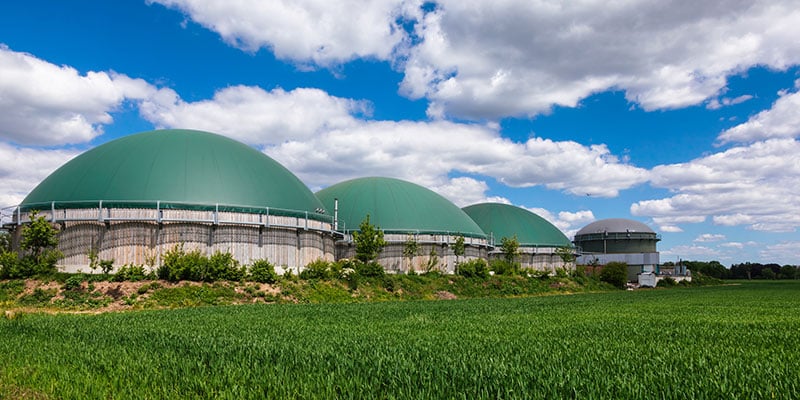Recuperative thickening gives operators a powerful tool to upgrade existing assets and efficiently meet growing demands.
Here’s how recuperative thickening with a sidestream loop can be a game changer for your enterprise
Industrial operations that use anaerobic digestion to treat high-strength organic waste often face a dilemma, that is, whether to expand digester volume or push existing units harder. Recuperative thickening offers a third option. It involves retrofitting an existing digester with a sidestream thickening loop to retain more biomass, minimize required volume, and maximize performance.
What Is Recuperative Thickening?
Recuperative thickening uses a solids separation and recycle loop on digester effluent. Using equipment like dissolved air flotation (DAF) devices, biomass is concentrated and returned to the digester while the liquid fraction moves on for further treatment or disposal.
This effectively increases the digester’s microbial population, allowing higher organic loading and more stable operation without building new tanks.
Minimizing Volume, Maximizing Performance
How exactly does recuperative thickening work, and how can it benefit your operations?
- It decouples SRT and HRT: Recuperative thickening decouples solid retention time (SRT) from hydraulic retention time (HRT), letting liquid flow through more quickly while biomass stays longer. This boosts capacity without extra digester volume.
- It improves biomass control: By selectively recycling active biomass, plants avoid washout, improve stability, and reduce issues like acidification and ammonia inhibition.
- It allows higher loading without expansion: Recuperative thickening can nearly double organic loading rates, making it ideal for retrofits where the footprint is limited.
- It leads to better mixing and reduced scaling: The recycle loop improves internal mixing and allows for external management of scaling compounds like struvite, protecting equipment and reducing downtime.
Key Design & Operational Considerations
Not all aerobic digestion setups will benefit equally from adding sidestream recuperative thickening. What are some of the considerations you have to take into account?
- Feed characterization: It’s important to thoroughly understand COD, solids content, and biomass behavior.
- Separation technology: Using a robust, high-solids separation (DAF or similar) is critical.
- Recycle ratios: Flow splits must be optimized for stability and energy use.
- Reactor compatibility: Recuperative thickening is best suited for flocculent biomass systems, but it’s not ideal for granular/fixed-film digesters.
- Monitoring & control: The process requires solid instrumentation and feedback control.
To sum up all considerations, recuperative thickening is best for:
- Facilities facing higher organic loads but constrained space
- Retrofitting existing digesters
- Treating waste streams rich in suspended solids, FOG, and proteins
It is less effective for granular or fixed-film digesters, or in cases with poor settleability.
Recuperative thickening is a proven way to maximize performance and minimize digester volume without costly expansions. By boosting biomass density, improving process stability, and unlocking higher organic loading, it gives operators a powerful tool to upgrade existing assets and efficiently meet growing demands.
Contact the experts at Fluence for assistance in deciding whether your enterprise could benefit from the addition of a recuperative thickening sidestream.

